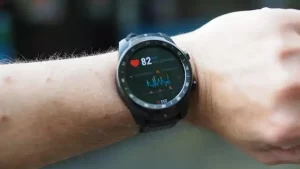CDC relaxes and reiterates its COVID-19 guidance
- Statins Lower Blood Lipids: How Long is a Course?
- Warning: Smartwatch Blood Sugar Measurement Deemed Dangerous
- Mifepristone: A Safe and Effective Abortion Option Amidst Controversy
- Asbestos Detected in Buildings Damaged in Ukraine: Analyzed by Japanese Company
- New Ocrevus Subcutaneous Injection Therapy Shows Promising Results in Multiple Sclerosis Treatmen
- Dutch Man Infected with COVID-19 for 613 Days Dies: Accumulating Over 50 Virus Mutations
CDC relaxes and reiterates its COVID-19 guidance
- Red Yeast Rice Scare Grips Japan: Over 114 Hospitalized and 5 Deaths
- Long COVID Brain Fog: Blood-Brain Barrier Damage and Persistent Inflammation
- FDA has mandated a top-level black box warning for all marketed CAR-T therapies
- Can people with high blood pressure eat peanuts?
- What is the difference between dopamine and dobutamine?
- How long can the patient live after heart stent surgery?
CDC relaxes and reiterates its COVID-19 guidance.
The U.S. Centers for Disease Control and Prevention (CDC) on Thursday announced some adjustments to its COVID-19 testing guidelines and what to do if people have a history of exposure.
The agency also reiterated old guidance, including measuring the general risk of COVID-19 based on community-level and individual health risk factors.
The guidance is for community settings, which will affect rules in schools, workplaces and similar places.
The agency said it would adjust guidance for health care or other high-risk settings in the coming weeks.

According to the agency’s press release, one change in the guidance is for those who did not get their COVID-19 vaccine on time, so the advice on what to do now “is consistent with existing guidance for people who are on time.”
Regardless of vaccination status, people do not need to quarantine after exposure (and are asymptomatic).
But people should get tested five days after exposure and wear a high-quality mask for 10 days.
Additionally, testing will no longer be recommended for people with no known exposure and no symptoms of COVID-19 in most cases.
This includes in schools, where the CDC no longer recommends routine screening tests. The CDC also removed its “test retention” information and guidance on Thursday.

“This guidance acknowledges that the pandemic is not over, but it also helps us move into a phase where COVID-19 no longer significantly disrupts our daily lives,” CDC epidemiologist Greta Massetti said in a release.
The agency also said continued physical distancing is “just one component of how to protect yourself and others.” The agency pointed to its tracking and guidance based on the local COVID-19 community level.
These levels can be low, medium or high, and mask wearing and other precautionary guidance will depend on where you live.
Guidance for isolation — staying away from others while having or experiencing symptoms of COVID-19 — remains the same for people with mild symptoms.
If their symptoms do not improve or they still have a fever, they should isolate for at least five days or more. People should also stay away from people with a higher risk of serious illness, whether or not they are allowed to leave quarantine, until Day 11.
People with moderate or severe illness, such as breathing difficulties, should continue to isolate until day 10.
The CDC also clarified that if people end their isolation but then your symptoms worsen, their isolation period should be restarted.
If you have questions about your symptoms or how long to isolate, you can discuss it with your health care provider.
CDC relaxes and reiterates its COVID-19 guidance.
(source:internet, reference only)
Disclaimer of medicaltrend.org
Important Note: The information provided is for informational purposes only and should not be considered as medical advice.



